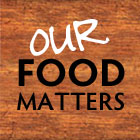
2 litres of home-made yoghurt from goat milk
Two minutes from here, there is a big goat farm. They sell most of their milk to dairies, who I guess make dairy products like goat cheese, or possibly labaneh. It is not that common with goat milk or fresh goat yoghurt in the supermarkets. We can also go there and buy fresh, unpasteurised goat milk, basically straight from the udder. Just bring your own container and 7 ILS per litre.
Handling unpasteurised milk is a sensitive matter, and unless you are milking your own animals, and can control the hygiene during all steps, a brief pasteurisation is recommended. When the milk is still in the udder, it is free from bacteria (as long as the animal is healthy), but as soon as it passes the nipples, bacteria are added to the milk, mostly lactic acid bacteria. These are the good guys, that under optimal conditions will eliminate harmful bacteria, and later turn the milk into yoghurt. However, if the milk has been cooled down before pasteurisation, the activity of the lactic acid bacteria has slowed down, to the benefit of harmful bacteria, such as E. coli bacteria and other cryophilic (cold-tolerant) bacteria. In this case, the milk needs to be heated up to a temperature where these bacteria die, and after that you add a new culture of lactic acid bacteria to create your yoghurt.
Alas, I could not rely on the naturally occurring lactic acid bacteria in this milk, since it had been somewhat cooled down. I heated it up slowly to approximately 70 degrees and kept it there for a few minutes, and then poured it over on a clean glass bottle. I put it in the fridge to cool it down quicker, but checked it regularly so the temperature did not sink below 45-50 degrees. When I could barely hold the bottle, I added one cup of yoghurt (standardised cow-milk yoghurt), and closed the bottle again. Then the bottle was kept in a water bath, to keep the temperature around 45 degrees. I refilled with warm water for a few hours and then let it stay over night, and cool down by itself. This morning I could see that the yoghurt had already set, but now it needs another day in the fridge before consumption. One litre will go with our breakfast granola, and the other litre will become labaneh.
Making yoghurt from this goat milk is definitely sustainable. The standardised cow-milk yoghurt that we normally buy from the supermarket cost about 25 ILS for 3 litres. Here you get two litres for 14 ILS, and the work load is not heavy at all. You neither need to buy yoghurt culture, since you use a small amount of the previous yoghurt to inoculate each new batch.
Maybe I will try to do some cottage cheese from this goat milk, but my final goal is to start making more refined types of cheese. I will probably start with feta-type cheese, that will ripen in brine, or some mold-inoculated cheese ripened in oil, both of which are easy to mature in a regular household. Cheeses that need to mature "on shelf" are not that easy since it is difficult to adjust temperature and humidity in the air, unless you have a climate chamber. The mold culture I will just harvest from any of the excellent goat cheeses that are available around here. Making matured cheese from milk bought for 7 ILS per litre is neither particularly sustainable, but the feeling of achievement is much higher than after cooking together a batch of cottage cheese, and besides, one day we hope to have one or a few does to milk for ourselves, and then you can really start talking sustainability. Now it is only training and preparation. And a lot of fun!






2 comments:
Interesting. I used to make a filmjölk-like product from cows milk. I got the recipe from an Indian friend. I never understood why I had to heat up the milk before starting the process so your explanation was welcome. I then let it cool to lukewarm before adding the culture, in my case a cup of storebought cultured buttermilk (kärnmjölk) to 4 cups milk. I set glass bowls of this in a slightly warm oven and usually had "filmjölk" the next day. Maybe it was filbunke? But- sometimes it did not thicken. I never used a thermometer so I probaly did something wrong there. Nowadays I just buy kefir when I hanker for filmjölk.
I grew up with a mother who made tätmjölk (långmjölk) every week and saved the starter year efter year. There was no heating up at all involved. Because it might have been unpasteurized? She just saved a spoonful of "täte" and put in in the new batch. Of course, I wouldn't eat it since it was so looooong, rubbery long strands of yougurt. The taste was good.
I think that filbunke is the right Swedish term for what you did, yes.
If you have your own animals and milk them under hygienic conditions, then you can set yoghurt or filmjölk immediately, without pasteurisation, since the lactic acid bacteria then have a clear advantage over unwanted bacteria. It is the cooling down that gives advantage to the unwanted bacteria.
Unpasteurised milk is preferable, since many healthy enzymes in the milk are killed during pasteurisation.
Post a Comment